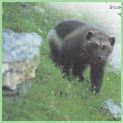Angélique and the Demon
As I build this web-site, and get more competent, and in turn more confident in its use I marvel at what can be drawn from the Internet or from my own files, stored from previous incarnations of various computers that Andrew and I have owned.
drawn from the Internet or from my own files, stored from previous incarnations of various computers that Andrew and I have owned.
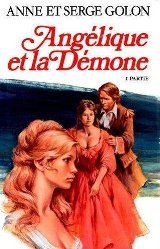 First of all I should like to say that I have always divided the Angélique saga into three parts and in each of those parts I have overriding favourites. Angélique and the Demon is my favourite within part two (the New World novels).
First of all I should like to say that I have always divided the Angélique saga into three parts and in each of those parts I have overriding favourites. Angélique and the Demon is my favourite within part two (the New World novels).
For me part one (the Old World novels) ends with 'Angélique in Love' as she embarks onto the next phase of her life.
'Countess Angélique' begins part two of the saga for me and ends with 'Angélique and the Ghosts.' This division is two-fold, firstly there were no more books in English after the rather feeble title of 'Ghosts' (the French original 'Complot des Ombres' meaning 'a Conspiracy of Shadows' would have been an entirely appropriate literal translation for the title of this novel), and it was more than evident that there was more to come .......
I discovered and then purchased the three further books in the saga (in French), 'Angélique à Québec', 'Angélique, La Route de l'Espoir' and 'La Victoire d'Angélique' and these became part three (the untranslated novels). 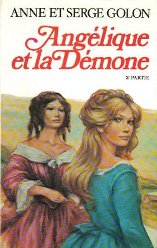
Their titles can be translated as follows - 'Angélique in Québec' and 'Angélique's Victory' (rather than the rather staid 'The Victory of Angélique' - but what about La Route de l'Espoir? Judging by the many entries on google, this is a popular expression in French, used frequently but it is all but impossible to translate into good English. Some favour 'The Path to Hope' - but what does that mean exactly and does it make an interesting title? Not in my book (no pun intended). Part one of the whole is entitled 'A Miracle in Salem' and that is pertinent to that section of the book and easy to translate. The intimation is more that there is an 'expectation' of hope, for wrongs to be made right than a trudge up a path called 'Hope' - maybe one day we will find out.
There could well be a fourth and concluding part as Anne Golon, in addition to restoring her Intégrale is also completing the saga to its conclusion in a final tome (potentially in two parts) using the proposed, and still ambiguous, working title of 'Angélique et le Royaume de France'.
The colour scheme of these books therefore relates to the areas I have sectioned off. The Old World is opulent and decaying and is represented by the very royal shades of purple. The New World is fresh and rejuvenating, sins and terrors sloughed off and is represented by the natural greens of nature. The untranslated books are still a 'grey' area for those who cannot read either French or any other alternate language that the books have been translated into - so they are represented by monochrome. Today I determined that I would, in addition to this page, create the the fourth and final section - I have chosen shades of muted ashes of roses pink - to lighten the opulence, link into nature and add colour and hope (rising from the ashes) to the conclusion.
I have, since making this decision a few weeks ago, decided to stay with the silver-grey owing to mark the unknown quantity of the conclusion of these books and despite the continued longevity of Louis XVI and what he may yet inflict on the returning Peyracs.
[This introduction is placed here, in the Book 9 section because it is the first I am working on, variations may appear on other Book pages or will be linked to this page.]
When the 'Friends of Angélique' Yahoo group formalised its existence, Steve Hall and Graham Carter worked on the groups behalf to create an English version web-site in honour of Anne Golon, her work and to keep English speaking fans informed in a language they understood. 'The World of Angélique' was launched successfully and although it was the original definitive site sanctioned by Anne Golon the domain has now been lost. I have attempted to reproduce some of the original pages notably my own contribution concerning the Wolverine (see below), Harvey's original page that drew us all together, first contact and will continue to reproduce relevant sections as this website expands. I reiterate again that this is a private website with comments attributed where appropriate, otherwise opinions and suggestions are original and my own and remain my intellectual copyright.
The fans were encouraged to contribute their own stories, experiences and any knowledge that might be useful to the site - between us Graham and I put together the story of the 'Wolverine' and 'Cantors' devotion to this 'oddity of nature'. The original article is lost and as I have become a little unhappy at my original contribution, I have amended and reproduce below a revised version of what I most likely wished to say but was in too much of a hurry or state of excitement to make it sufficiently meaningful.
To give you a better idea of what the 'world' looked like at the time of writing, these two maps might help you to imagine how the explorers, not forgetting the pirates, travelled.
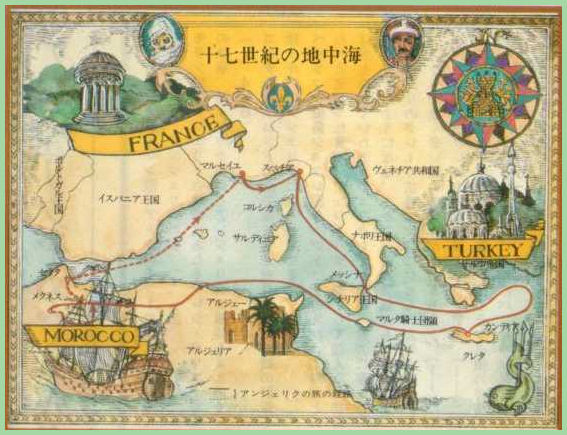
The first map above gives you an indication of how France and the Ottoman Empire saw themselves - two 'super' powers of the day.
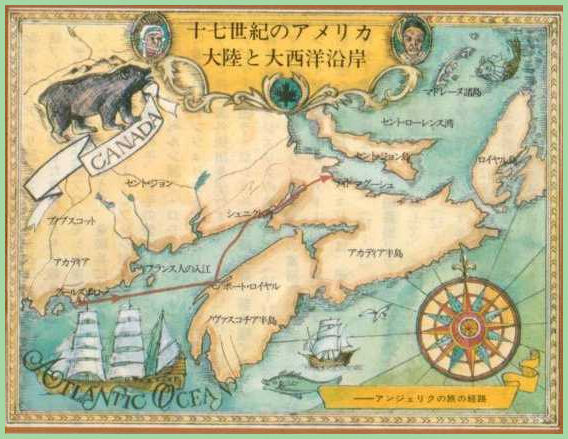
And here is the domain of the Wolverine as yet unspoilt and unwelcoming.
Cantor and his Wolverine
I have always held that the relationship between Cantor and his Wolverine was pivotal to the storyline, but despite the major appearance of this partnership being evident in this book, there is yet much more to come in the untranslated books. My original article with some changes follows:
The wolverine is an important element in Anne Golon's stories set in the New World because of its association with Cantor, Angélique's second son by Joffrey de Peyrac.
Several mysterious, sometimes insignificant, sometime significant circumstances follow Cantor around throughout the series, pointing strongly to the gift of protection or clairvoyancy. (In some prejudiced or unenlightened eyes this would make him more than ever resemble his 'sorcerer' father and 'demon' mother). However, to the more enlightened, this would just be a natural progression of his mothers' love and understanding of her native marshlands in Poitou. This then might also explain Cantors' embracing the wonders of a savage New World with a complete disregard for the convention he left (again by chance) behind on the Old.
Despite his education, Cantor is really a 'child of the woods' - not unlike his mother, before him, was a child of the marshes. He is in tune with nature and has an extremely stubborn or, considering his heritage, arrogant streak.
The wolverine is considered an extremely dangerous wild animal and just to make people doubly afraid of it, is thought to have supernatural powers. So, on discovering an abandoned cub, Cantor decides to rear it for two reasons - firstly because he recognises it as an animal requiring help, but, more importantly, because he knows full well that he can create all manner of mischief by making this oddity of nature his companion.
It provides a continuous link with Cantor and his mystic side. Wherever Cantor is, so is the wolverine - even if not in immediate evidence. Cantor's wolverine has to have its 'wild time' and will go off on its own as necessary, but when Cantor is in need of it they seem to have a telepathic link.
The most prominent appearance of the wolverine and the most potent is in 'Angélique and the Demon' when the villagers brutally turn on Angélique, and the wolverine is used to disperse them. Its appearance standing firm with with our eponymous heroine and her son fuels further speculation about Angélique being in league with the Devil.
All good and clever stuff - and more so because it receives the traditional Anne Golon trademark of meticulous attention to detail as she brings the wolverine to life on the page.
It's no wonder that, at the time of the writing of the latter books, she was arguably the world's leading authority on the wolverine and her documentation was used by naturalists to study the animal further.
How Cartographer's saw Maps/Shipping Lanes/Flora & Fauna and the unknown 'Mystique'
These days finding things of interest on the internet are vast and it can get confusing because it's all so interesting so how do I choose? I stuff everything into folders (usually) complete with provenance (I try to avoid pinterest as they never acknowledge origins - much of my own work is up there without so much as a 'by your leave'!) Where in earlier days I was remiss in recording provenance I now have the luxury (usually about 75% successful) of finding images via the Google Pictures reverse search. Those that I cannot track down will now usually be the first port of 'cull' (if you see what I mean!) There is a magnificent map from 1678 entitled 'Map for the Clarification of Land Titles in New France, 1678' which has all of the above! I shall use it to illustrate and explain (verbatim from the website) what I mean! All the information is sourced with grateful thanks from the World Digital Library.
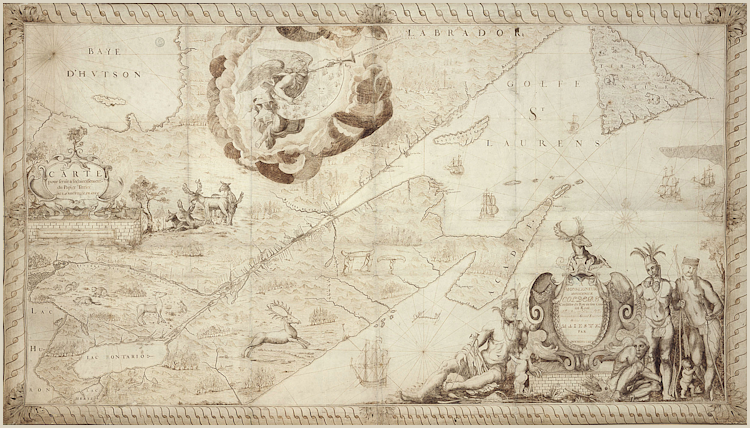
The complete 'Map for the Clarification of Land Titles in New France, 1678'
'This large and beautiful map by Jean-Baptiste Franquelin (1651–after 1712), later the royal hydrographer in Quebec, shows the French presence in the Saint Lawrence valley and Atlantic Canada in 1678. For 20 years from the early 1670s, maps by Franquelin accompanied reports to France sent by the highest officials in its American territories. This map was dedicated to Jean-Baptise Colbert (1619−83), minister of finance under King Louis XIV, who was interested in the colonization of New France. The map includes illustrations of the animals, plants, and people of this part of North America. The drawings of the animals are not very accurate, but bear, beaver, and moose are clearly recognizable. Lake Erie and Lake Ontario are shown, along with parts of Lake Huron and Hudson's Bay. Settlements along the Saint Lawrence River are indicated by name, and Acadia (present-day Nova Scotia), Labrador, and Newfoundland are prominently marked. Scale is in French leagues, a unit of measurement that varied over time, and is approximately 1:1,630,000. Notwithstanding Colbert's interest, France had only limited success in settling its vast North American colony. Unlike the English, the French did not migrate in large numbers to New France because of urban poverty or religious persecution, and the monarchy did not show much interest in supporting settlement over the long term.' Source : World Digital Library
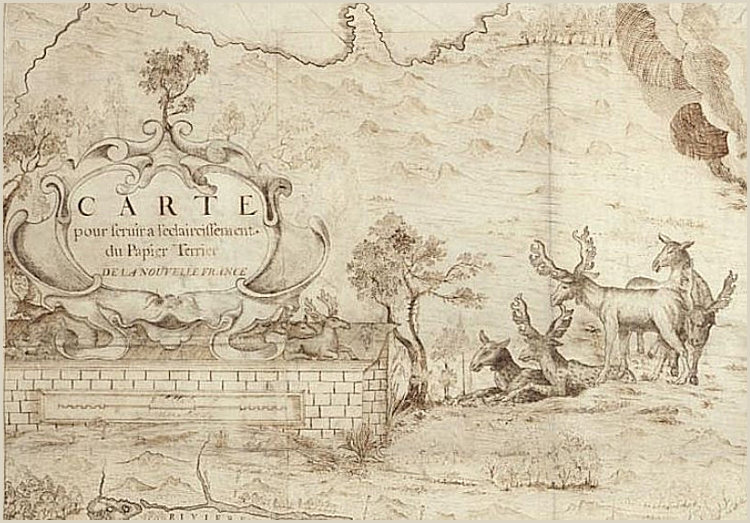
The cartographer's title and provenance for the 'Map for the Clarification of Land Titles in New France, 1678' (Carte pour feruira l'eclaireiffement du Papier Terrier de la Nouvelle France)
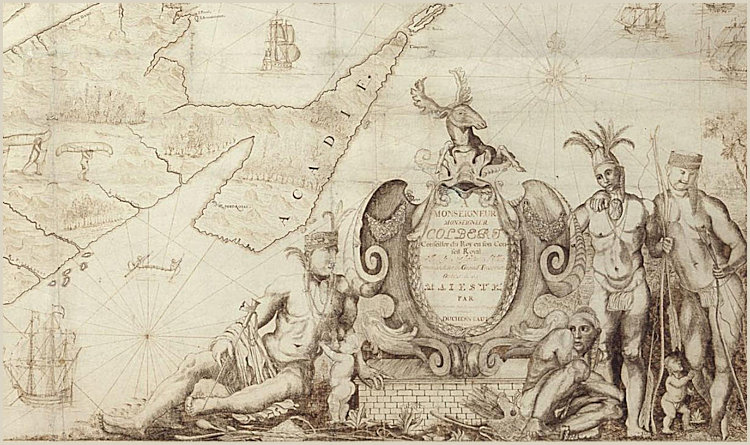
The map provenance showing it was dedicated to Jean-Baptise Colbert (1619−83), Minister of Finance - this segment clearly shows 'Acadia', the ships of the era and a representation of the natural/native inhabitants of the area.
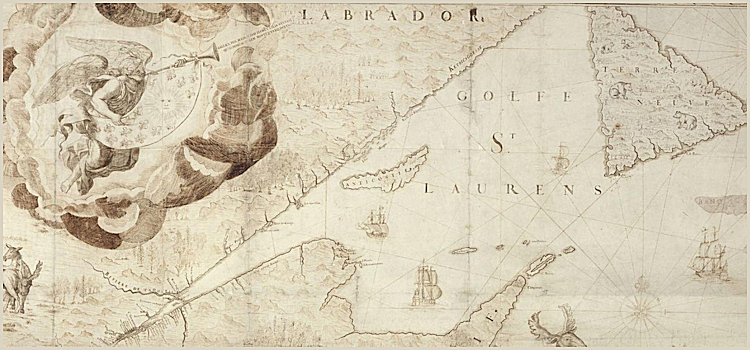
Above Acadia we see the familiar and famous Gulf of St Lawrence and the river of the same name - this part of the map is dedicated to the splendour of mysticism with celestial beings, cherubim and clouds signifying the religious preferences of the times.

I'm going to be whimsical here and say that Newfoundland seems to be a place populated with what could, with a bit of the imagination look like 'Wolverines'! My thanks to the World Digital Library for this remarkable document.
But what of the Book?
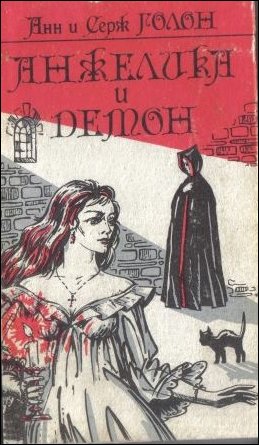
I found this today and find it and compelling even if I'm not sure what it portrays as M. Chat is white!
I hear you say? This is, I say unashamedly, my favourite book, not just in the 'New World' section of the series, as stated earlier, but overall! There is something about the physical introduction of Ambroisine de Maudribourg (although she appeared briefly as Baudricourt in heresay witness statements in previous volumes) that is sly and invidious and positively menacingly frightening. I've just checked the spelling of invidious and found that the thesaurus has fifty words for this one descriptor. I have listed them in the sidebar but the real surprise is that this word throws up 'yellow-eyed' - prior to this moment I had never given the meaning (although I thought it a strange piece of writing) of yellow eyes a second thought, and yet Ambroisine is described as having them - there's a definite tingle going up and down my spine as I write this.
I have covered much of events and characters of this book elsewhere on the site - Ambroisine and La Polack both feature in my Favourite Characters section and are given equal gravitas as I love La Polack as much as I am terrified of Ambroisine! My review nearly says it all and I have devoted an entire page to the King's Girls and the Wolverine! so what more is there to say - I will continue this another day,
Page refreshed : 6th May 2020 (G)



